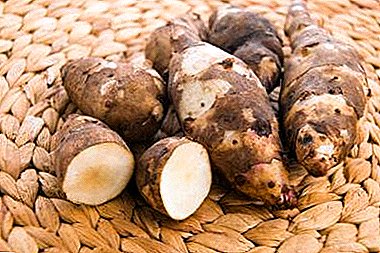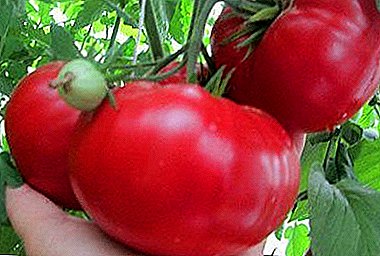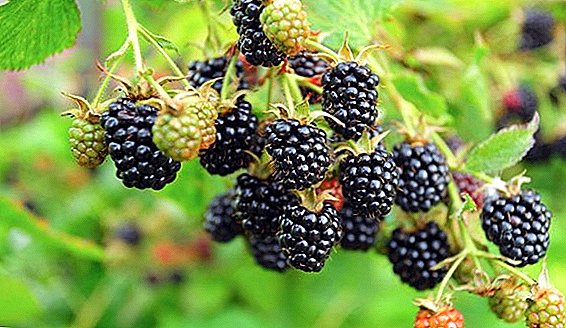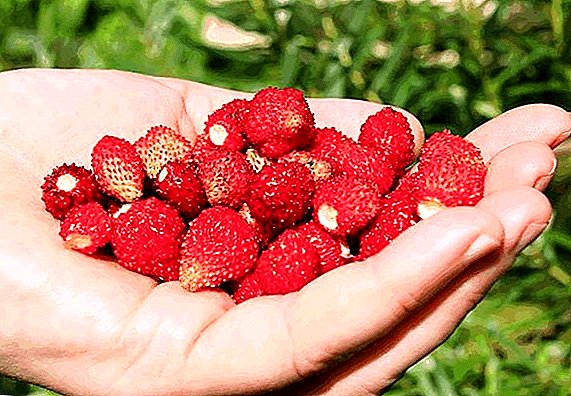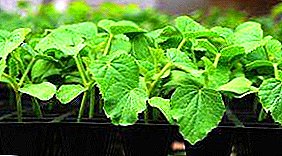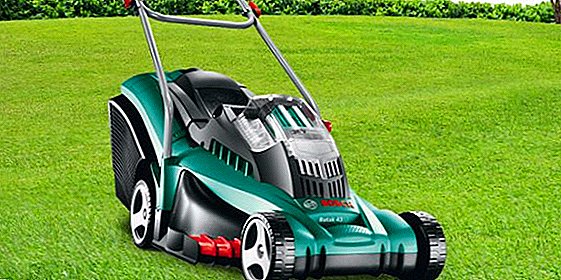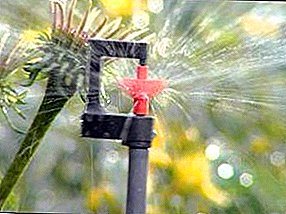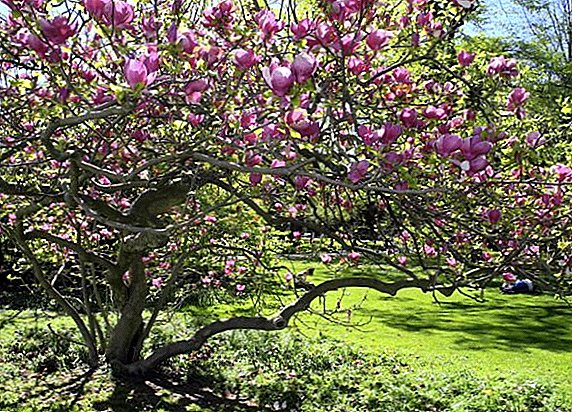 Surely many people at least once had to stop in the spring in front of someone's yard or garden, unwittingly admiring an unusual picture - luxurious pink, white or purple flowers on a beautiful and delicate tree without leaves. It blooms magnolia. At first glance it may seem that such a miracle can only be cultivated by experienced gardeners, having invested considerable funds and put a lot of effort into it. Let's try to figure out whether this is true by telling how to grow a magnolia.
Surely many people at least once had to stop in the spring in front of someone's yard or garden, unwittingly admiring an unusual picture - luxurious pink, white or purple flowers on a beautiful and delicate tree without leaves. It blooms magnolia. At first glance it may seem that such a miracle can only be cultivated by experienced gardeners, having invested considerable funds and put a lot of effort into it. Let's try to figure out whether this is true by telling how to grow a magnolia.
Magnolia (Magnolia) - Deciduous or evergreen ornamental tree and shrub in height from 2 to 30 m with beautiful large flowers with a diameter of up to 25 cm, which are located one at the ends of the branches.
This is a very ancient plant. Argued that it is the progenitor of modern flowering plants. This tree is popular in China, where there are many beliefs about it.
Did you know? Magnolia is valued not only for its beauty. Its leaves, flowers and fruits contain essential oils that help with high blood pressure, rheumatism and digestive problems. They are also used in perfumery.
 The tree came to Europe in the 17th century and it was here that Magnolia got its name in honor of the director of one of the botanical gardens in France, Pierre Magnol. Since then, breeders bred a huge range of species and varieties of magnolia. Today, about 80 species are cultivated, differing in shape and size of the crown, color and shape of flowers.
The tree came to Europe in the 17th century and it was here that Magnolia got its name in honor of the director of one of the botanical gardens in France, Pierre Magnol. Since then, breeders bred a huge range of species and varieties of magnolia. Today, about 80 species are cultivated, differing in shape and size of the crown, color and shape of flowers.Magnolia: the choice of landing site
Before you attend to growing a magnolia in your garden and caring for it, you need to choose the right type, variety and place for planting. Since the main problem of the magnolia tree is the poor tolerance of frost, when choosing a plant type, you need to pay attention to how cold winters are in your region, and which particular type is suitable for your climatic conditions. The most cold-resistant magnolia Kobus and Lebner. The harsh winters of Magnolia Sulange, Wilson, Ash are relatively well tolerated.
When choosing a site for planting, it is necessary to take into account that this plant does not tolerate drafts very well, therefore the site should, if possible, be sheltered from the wind from the north and east, for example, by higher trees.
Important! You should not plant magnolia under fruit trees, as falling fruits can damage the flowers and break the branches of the plant.
 It is necessary to take care of sufficient illumination of the place, so that the tree is not located in deep shadow. Also, the plant should not penetrate direct sunlight. Exceptions may be for magnolias Lebner, Kobus and star-shaped, which can grow in open areas. Kobus is also resistant to exhaust gases and industrial emissions, which allows it to be planted near busy motorways and in industrial areas.
It is necessary to take care of sufficient illumination of the place, so that the tree is not located in deep shadow. Also, the plant should not penetrate direct sunlight. Exceptions may be for magnolias Lebner, Kobus and star-shaped, which can grow in open areas. Kobus is also resistant to exhaust gases and industrial emissions, which allows it to be planted near busy motorways and in industrial areas.
Today, magnolia is often used in landscape gardening, so many recommendations have been written on how to grow tree-flowers personally, the main ones of which we share with you.
When to plant magnolia in the garden
The tree can be planted both in spring and autumn. Although experienced magnolia owners recommend the latter option. This is due to the fact that before the autumn planting the plant is at rest, and so it is easier for him to transfer the winter. And at spring planting, the tree begins active growth, gives a big increase and often meets winter already with shoots, which by this time have not had time to become covered with wood and die.
How to plant a magnolia
Magnolia is not very whimsical, but when planting and caring it is necessary to follow some simple rules, which, first of all, relate to the composition of the soil, watering and feeding.
Soil composition
 Magnolia sapling is best acquired in well-established specialized stores. Usually there they are sold in containers. Such plants are well tolerated by both spring and autumn planting, since they are planted with a clod of earth, to which they have already adapted. Gardeners with experience for planting recommend acquiring plants 1 m in height with a pair of already blossoming flowers. So you will know for sure that your local climate is suitable for this type of magnolia.
Magnolia sapling is best acquired in well-established specialized stores. Usually there they are sold in containers. Such plants are well tolerated by both spring and autumn planting, since they are planted with a clod of earth, to which they have already adapted. Gardeners with experience for planting recommend acquiring plants 1 m in height with a pair of already blossoming flowers. So you will know for sure that your local climate is suitable for this type of magnolia.
The soil for planting should be light, well drained and moderately moist. Neutral or weakly acidic soil rich in organic matter is perfect.
Important! Magnolia is contraindicated for lime and saline land.
If the soil on your site is lime, then you can add peat to it, which will increase the acidity.
The optimal composition of the soil:
- leafy or turfy ground - 1;
- peat - 2;
- sand - 0,5.
Magnolia planting pattern
 The pit for planting should be prepared in advance, 3-5 times the size of the tree root system. Drainage is placed at the bottom of the pit - 15 cm high. Then a layer of sand (10 cm), a layer of manure (15 cm), again a layer of sand (15 cm) and the prepared soil mixture are laid. After this, the seedling is placed in a pit and covered with earth, while controlling that the root collar is not buried. The maximum recommended depth is 2.5 cm. The ground should be lightly tamped and watered abundantly. Pristvolny area can be covered with coniferous bark, which will retain the desired level of moisture.
The pit for planting should be prepared in advance, 3-5 times the size of the tree root system. Drainage is placed at the bottom of the pit - 15 cm high. Then a layer of sand (10 cm), a layer of manure (15 cm), again a layer of sand (15 cm) and the prepared soil mixture are laid. After this, the seedling is placed in a pit and covered with earth, while controlling that the root collar is not buried. The maximum recommended depth is 2.5 cm. The ground should be lightly tamped and watered abundantly. Pristvolny area can be covered with coniferous bark, which will retain the desired level of moisture.
Magnolia does not tolerate transplants, so it must immediately be planted in a permanent place. If you plan to plant several trees, then the distance between them should be at least 4-5 m.
Features of Magnolia Care
After proper planting magnolia her well-being will depend on the care of her. There are no fundamental differences from the care of ordinary fruit trees in this case.
Watering plants
You need to water only young plants, and in the dry period and adults. For the well-being of the tree he needs watering once a week in the amount of 2-3 buckets of water. If summer is too dry or magnolia grows in sandy soil, then the regularity and abundance of watering can be increased.
Soil care
 The roots of magnolias are superficial, so the ground in the basal area should be loosened to a depth of 20 cm, while doing this should be done with caution, preferably without using a shovel or a rake. Weeds are better to pull hands. After the tree reaches 3 years old, the trunk circle can be mulched with organic materials (coniferous bark, peat, sawdust, manure). This will warm the soil and provide an additional source of nutrients. After this procedure, the land can no longer loosen.
The roots of magnolias are superficial, so the ground in the basal area should be loosened to a depth of 20 cm, while doing this should be done with caution, preferably without using a shovel or a rake. Weeds are better to pull hands. After the tree reaches 3 years old, the trunk circle can be mulched with organic materials (coniferous bark, peat, sawdust, manure). This will warm the soil and provide an additional source of nutrients. After this procedure, the land can no longer loosen.
When and how to fertilize magnolia
It is necessary to feed and fertilize a tree not earlier than 2 years after planting. In early spring, you can feed your beauty with a mixture of 1 kg of mullein, 15 g of urea, 25 g of ammonium nitrate. At the beginning of autumn fertilizing with nitroammofoska (20 g / 10 l of water) is useful. Irrigation rate - 40 liters per tree.
You can use fertilizer "Kemira-Universal" (1 tbsp / 10 l of water), as well as special fertilizers "For Magnolia".
Important! If at the end of July magnolia leaves began to dry, it means that there was an overdose of fertilizers. In this case, the plant is prescribed weekly abundant watering.
Pruning plants
Since magnolias do not tolerate pruning, this procedure is necessary only for decorative purposes in the first years after planting to give the desired shape to the crown. To get involved in this process is contraindicated, as this may provoke less active flowering. In the future, it is recommended only sanitary pruning once a year, in which dry, curved, damaged branches are removed. If the crown is thickened, then it is thinned out. In order for the slices to heal quickly, they must be covered with garden pitch. 
Magnolia: how to save the plant in winter
Mature trees in winter tolerate temperatures down to -25-30 ° C. Therefore, the question of how to preserve a mature magnolia in winter is no longer necessary for its owner. But young plants need to worry. In the first 3 years, their lower part of the trunk and the root system (or even completely wood) must be insulated with special agrofabric (lutrasil), sackcloth, straw or spruce fir branches. With age, the hardiness of magnolia increases.
In subsequent years, the ground in the circle of the tree should be mulched with sawdust, pine bark, and peat in the fall.
Magnolia Breeding Methods
Magnolias breed in three ways:
- seeds
- layering and cuttings,
- vaccinations.
Seeds
 In nature, magnolias breed by seeds that are carried by birds. You can also try to sow a tree from seeds. This should be done in the fall, immediately after picking the berries. Or postpone until spring, but keep the seeds in the refrigerator in a plastic bag.
In nature, magnolias breed by seeds that are carried by birds. You can also try to sow a tree from seeds. This should be done in the fall, immediately after picking the berries. Or postpone until spring, but keep the seeds in the refrigerator in a plastic bag.
Pre-seeds must be poured for 3 days with water, and then cleaned of a dense oily shell (for example, by rubbing through a sieve). After cleaning, they should be washed in a weak soap solution and rinsed in clean water several times. Sow in boxes to a depth of 3 cm in the universal soil. Capacity clean the cellar until spring. In early March, they need to be moved to the window sill before germination. Seedlings can be planted in a year. So you will have a self-grown magnolia, the birth of which you already know well how to take care of it.
Did you know? Since magnolias live in nature in areas with wet summers and dry, warm winters, seedlings grow slowly in the first year of life. Leaves can only be expected by the middle of summer, and seedlings will actively grow only in the fall.
Cuttings
 When the vegetative method of reproduction (layering and grafting) magnolias enter the flowering phase earlier than the seed. This method gives the best result in the initial years of the tree life.
When the vegetative method of reproduction (layering and grafting) magnolias enter the flowering phase earlier than the seed. This method gives the best result in the initial years of the tree life.
When breeding by layering in the spring, you need to bend down and sprinkle one of the lower branches with earth. In a year or two, roots should form on it. After that, the layers are carefully separated from the mother tree and transplanted to grow.
At the end of July, you can try grafting. Cuttings are taken from young trees, leaving 2-3 leaflets in the upper part. The lower part is treated with any substance for rooting. Then they are planted in a greenhouse, in a container with sand, covered with a lid and maintained at a temperature of + 19-22 ° C and the necessary humidity. Rooting should occur in 5-8 weeks. In the open ground cuttings are planted in a year. If grafting was carried out immediately into the ground, then they need to provide good shelter so that they can transfer the cold.
Vaccinations
The method of propagation by grafts allows you to achieve rapid growth of the plant, early fruiting, increase its endurance. However, this method is more laborious than grafting. Vaccinations are carried out in early spring in a greenhouse or in the open field by methods of improved copulation, pripriklad or lateral cutting.
Despite its nontrivial beauty and seeming fragility, magnolia is unpretentious when grown. It grows rather quickly, very rarely gets sick and is practically not damaged by pests and rodents. If you provide her with proper care, she will delight you with flowering and scent for many years to come.


